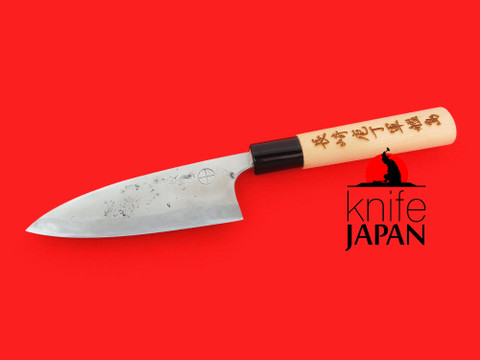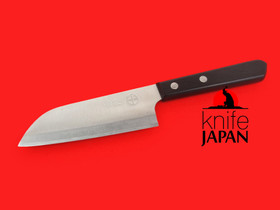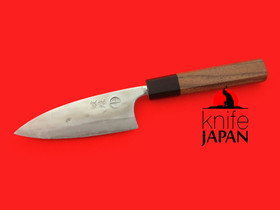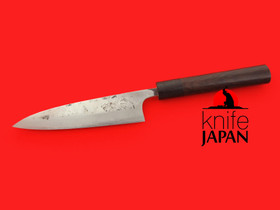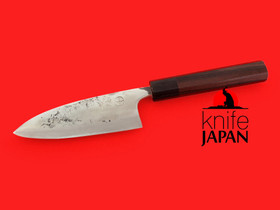Kuwahara Kaji Kobo・Nagasaki Gunkanjima Deba-bocho 125mm・Migaki stainless
Product Description
Why are short fish knives so popular? Because there are plenty of short fish. Ha ha.
Laugh if you like, it's true. The short deba knife - or lighter ajikiri - is a useful addition to any setting that sees the kind of fish we often catch or buy. The shorter kind. Big, heavy deba knives are great (please buy one) but we'd be willing to bet you'll fillet with shorty just as often. It's much easier to take to a big fish with a small deba than it is to use a long, heavy deba on a smaller fish.
This 4-sun length deba sports a mid-weight stainless blade that's light, low maintenance and, we think, rather beautiful. The hand-hammered finish of Kuwahara san's migaki series is rare in a stainless blade. Combined with the neatest hiba handle we've seen it represents modern convenience in the kind of hand-crafted tool that's nice to have in your life.
There's a bit to unpack in the name. Why 'Gunkanjima' deba?
Kayaki-cho has a long association with the nearby island of Hashima, also widely known as Gunkanjima. They shared the local stage in Japan's 19th century industrial development and knife makers in the area long utilized the high-grade coking coal extracted from Mitsubishi's undersea Hashima mine. It's an appropriate marketing association, hence 'Nagasaki Gunkanjima deba-bocho'. 'Migaki' refers to the polished finish, usually used in contrast to 'kuro-uchi' black-forged knives.
Kayaki-cho blades are known for being 'nebari-zuyoi', a term that is sometimes translated as 'tenacious'. Persistent, perhaps. The sense of the word is a quality of malleability and stickiness, applied to high-grade cutlery steel it describes a robust, chip-resistant cutting edge.
Sharp, rust resistant, beautiful. Versatile. Lighter than many deba knives of this length.
| Blade steel: | Yasugihagane | stainless |
| Bevel: | Ryōba double bevel |
| Blade construction: | Sanmai tri-layer |
| Left-handed available: | Handle and blade suit both hands |
| Handle: | Hiba (Thujopsis) |
| Ferrule: | Plastic |
| Blade length: | 125mm |
| Overall Length: | 260mm |
| Blade height: | 42mm |
| Blade spine: | 4mm |
| Handle length: | 122mm |
| Handle width: | 25x20mm |
| Weight in hand: | 94g |
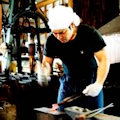

 Loading... Please wait...
Loading... Please wait...











